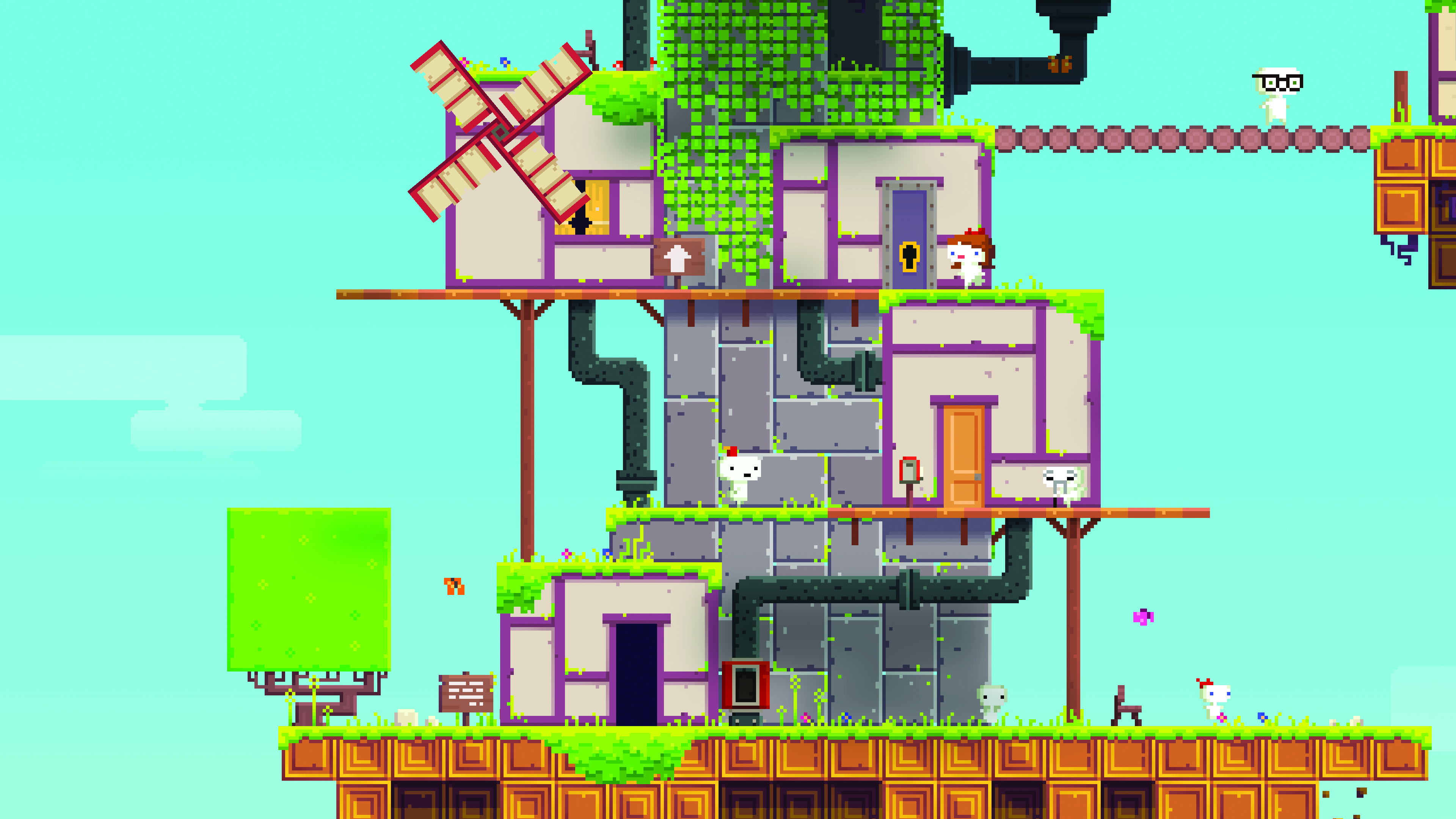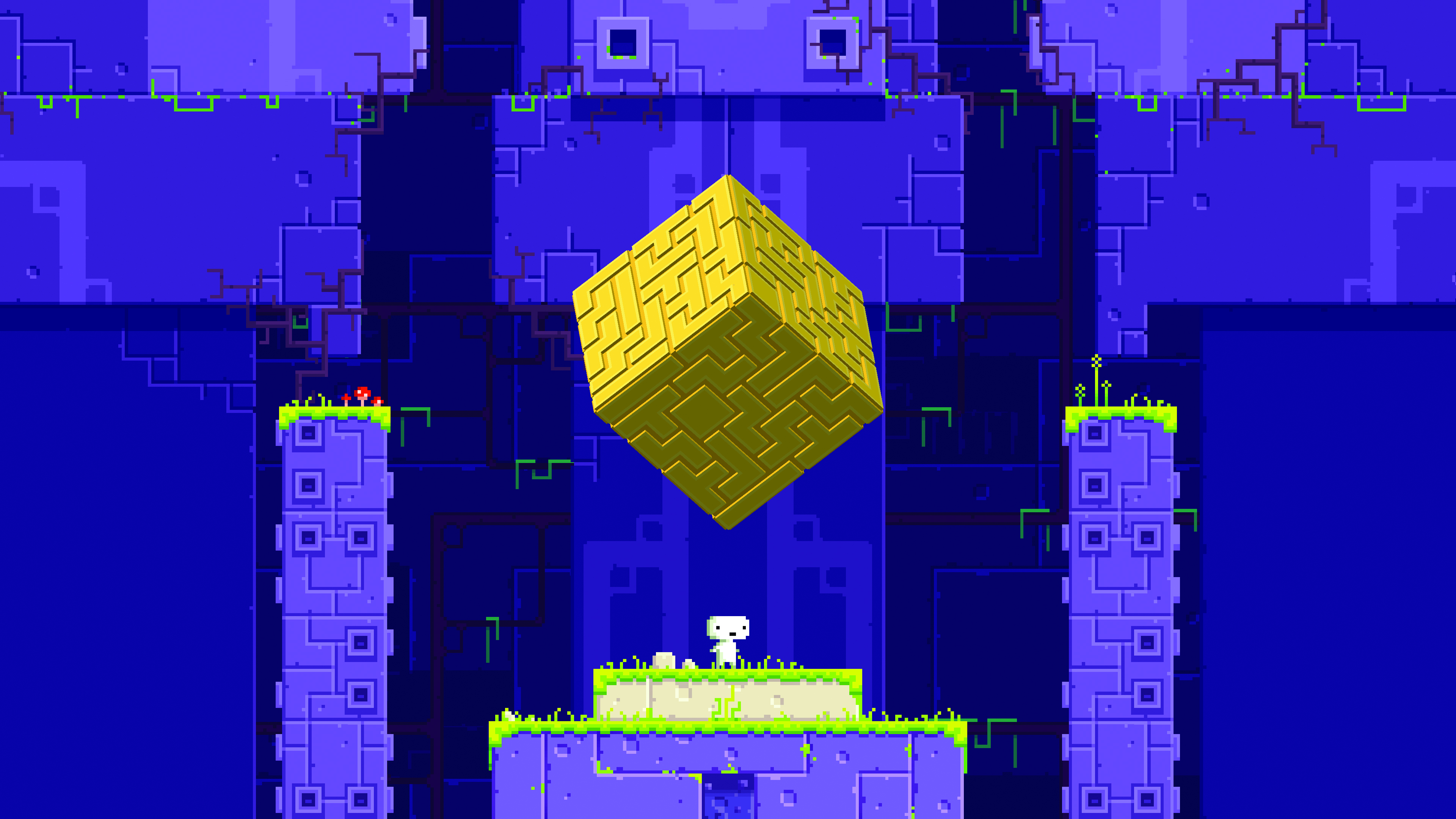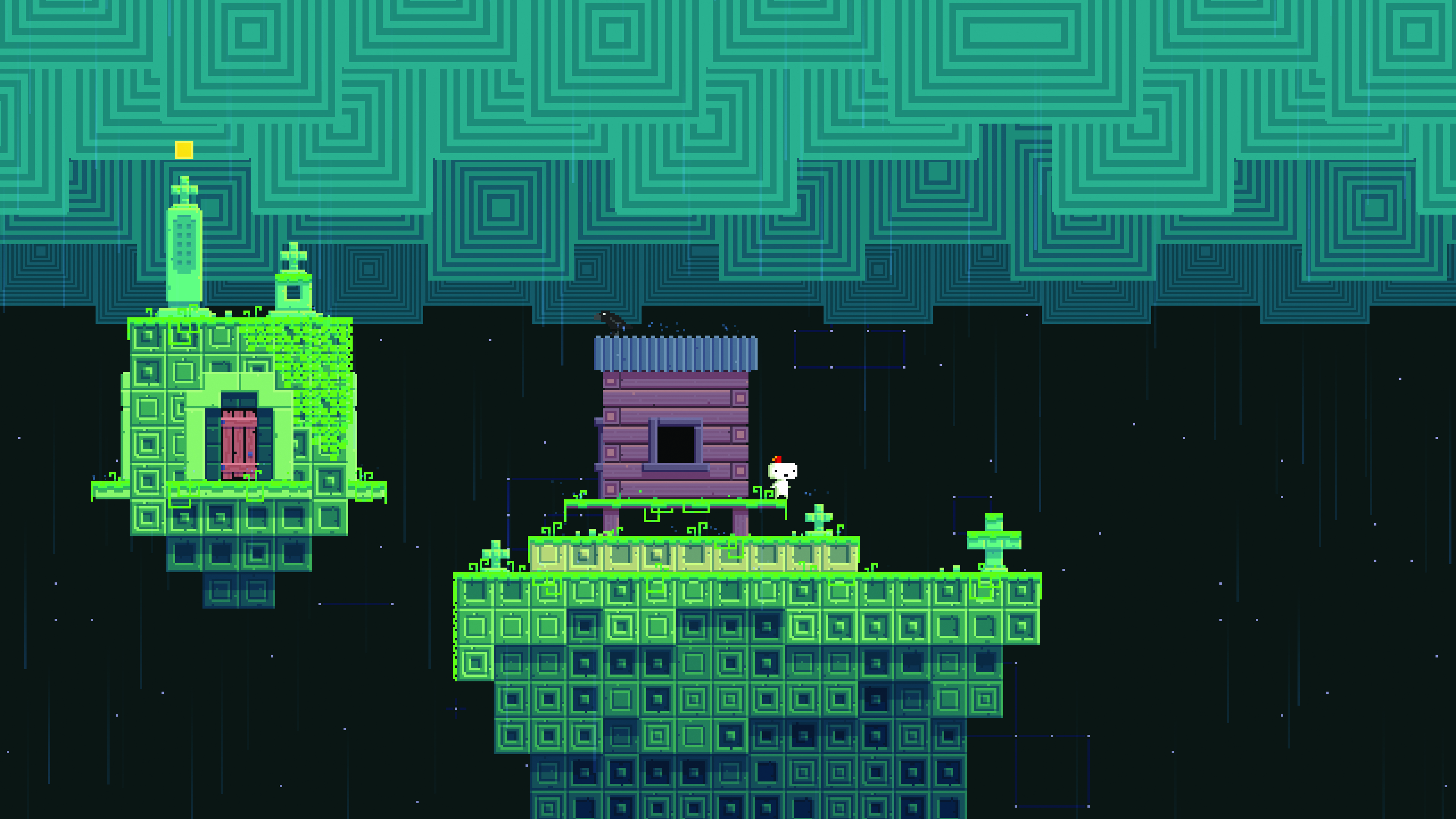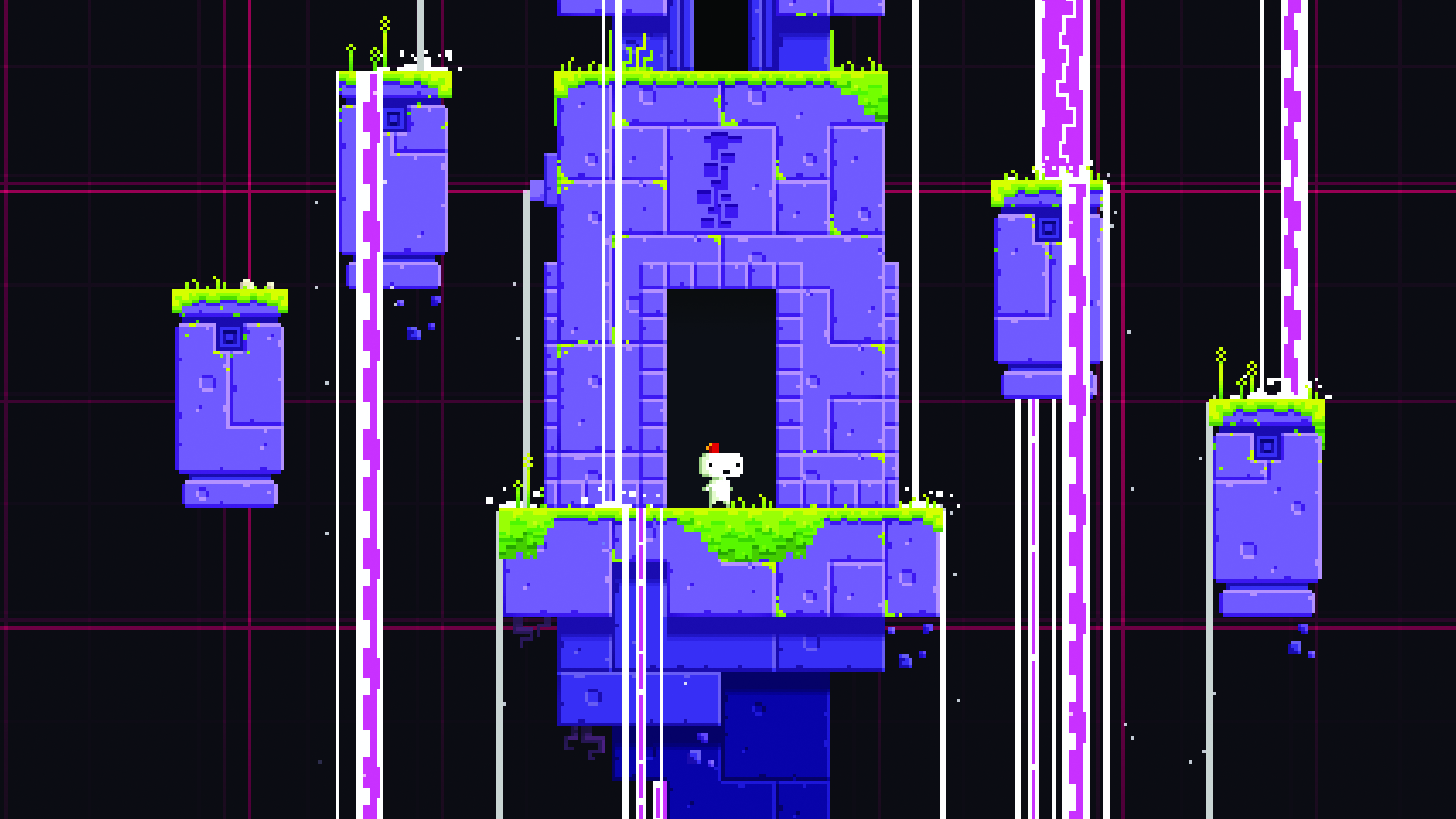Fez is still a stunning puzzle platformer with one of the best soundtracks in games
Revisiting the perspective-shifting platformer.


Reinstall invites you to join us in revisiting PC gaming days gone by. Today Andy warps time and space in the wonderful world of Fez.
As you amble around Fez’s opening village, with its blue skies, gently swaying pixel grass and fluttering butterflies, it’s hard to believe the creation of this place involved so much stress and turmoil. Severe delays, loss of funding, legal disputes, multiple redesigns and other problems plagued the game’s development—as shown in the fantastic 2012 documentary Indie Game: The Movie. But you don’t feel any of that when you play it. The atmosphere is serene, the pace is gentle, and it’s just a nice place to exist in.
Fez released on Xbox 360 in 2012 amid a lot of noise about its troubled development, the divisive opinions of outspoken designer Phil Fish, and whether it lived up to the hype or not. So it’s nice to return to Fez now the dust has settled and appreciate it for what it is: a clever, stunningly beautiful puzzle-platformer with a neat open-world structure and one of the best musical scores that’s ever accompanied a videogame.
Composer Rich Vreeland, better known as Disasterpeace, doesn’t get enough credit for establishing Fez’s unique ambience. His score is delicate and atmospheric, like a Chopin nocturne colliding with the dreamy, sweeping synths of a Vangelis movie score—although he admits to only listening to the Blade Runner composer after hearing people frequently make the comparison. It’s one of the few game scores I listen to regularly, standing on its own as a remarkable album of electronic music.

Fez’s world is a varied one, and the score reflects this. The music is chirpy and upbeat in those leafy, blue-skied levels, but when you delve into crumbling temples and underground caverns, it takes on an eerie, enigmatic quality. Ico is one of Fish’s favourite games and Fez shares its knack for making its world feel ancient and mysterious. The arcane puzzles, alien languages and idiosyncratic architecture make Fez’s world a beguiling one, giving you the feeling of being a trespasser in some forbidden, forgotten place, eager to decrypt and unlock its history and many secrets.
Using a magical fez, hero Gomez can turn his 2D world temporarily 3D, twirling it around to solve puzzles and navigate the often vast, sprawling levels.
The influences don’t end with Ico. Fish considers Fez to be a direct reflection of him, an extension of his ego: particularly the formative games he played growing up in Montreal. In Indie Game: The Movie he talks about getting a NES for Christmas with Tetris, Mario and Zelda: three games whose imprint is felt throughout Fez; look closely at any level and you’ll see that the structures and objects are made up of tetrominoes. But Fez’s brilliance lies in how it uses these familiar influences to create something genuinely new and distinctive, rather than just dining out on nostalgia.
The central gimmick is, of course, shifting perspective. Using a magical fez, hero Gomez can turn his 2D world temporarily 3D, twirling it around to solve puzzles and navigate the often vast, sprawling levels. The bespoke Trixel engine is still really impressive, looking like flat pixel art until you alter your perspective, revealing an intricate threedimensional world. And it’s a wonderfully versatile system, offering an abundance of clever puzzles and platforming challenges. Fez squeezes an incredible amount of variety and surprises out of this one seemingly simple concept.
But the thing I really love about Fez is its structure. To reach the end (well, one of them) you have to collect cubes scattered around the world. But the order in which you do this is entirely up to you. It’s nicely liberating, and encourages exploration. Look at the map and you’ll see a blank area connected to your current location, indicating there’s an entrance somewhere—and likely a hidden one. The world is a complex labyrinth that can be confusing to navigate at times, but is a delight to pick away at, uncovering new areas and mining them for cubes. Some cubes are complete, while others have been shattered into pieces that you’ll find scattered around the level, usually hidden in cracks and crevices that you can only see by changing perspective. And there are some neat one-shot gimmicks too, like using levers to raise and lower water, and sections where your dimension-altering powers are limited. Fez was years in the making, and it’s clear why. There’s so much in it, so many ideas and so much imagination.
The biggest gaming news, reviews and hardware deals
Keep up to date with the most important stories and the best deals, as picked by the PC Gamer team.

“It’s like a volumetric Metroidvania,” Fish told Official Xbox Magazine in 2012. “Rooms connect in every direction. I structured it like the first Legend of Zelda in the sense that you can play these areas in any order. There isn’t really a critical path or a right way to do things. It’s just: here’s this world, it’s full of nooks and crannies and secrets, now go explore.”
Fez is light on story, but the idea is that its digital world is fragmented, breaking down, and you’re trying to make it stable by collecting cubes. It pulls some neat tricks with fake-out glitches and crashes, and sometimes a level will be polluted with fractures that suck Gomez into a void when touched, making navigation much trickier. It’s funny too, with irreverent dialogue, a charming self-awareness, and cute touches in the animation of both Gomez and the people and creatures around him.
Late in the game you visit a village where no one speaks English or, err, whatever Gomez’s language is. But it’s possible to decipher it using clues in the game, revealing their dialogue. “Haha, check out Mr Rectangle Head over here!” mocks one villager. “What’s wrong with your head?” says another. When you first see this language, made up of abstract, pixelated hieroglyphs, you think they’re revealing some ancient wisdom that might come in handy somehow. But nah, they’re just making fun of your head.
When you finish Fez a new game plus option unlocks, in which your cubes, keys and other collectables carry over, and you get access to new areas that you’ll need to hit 100% completion. You also unlock a pair of sunglasses, which don’t just make you look extra fashionable, but enable you to switch to first-person mode and view the world in 3D. It’s a cool extra, granting you a third perspective, even if it doesn’t have any real practical use. Fez is full of secrets like this, and it’s best if you find them without using a guide. Although that may be easier said than done: some of its puzzle solutions are really obscure.

“So many games are about putting you in these incredibly stressful situations,” Fish told Destructoid in a 2011 interview. “It’s always a threat or a conflict. It’s about quick reflexes. But when I sit down to play a game at the end of the day, I don’t wanna be put in that situation. I wanna unwind. So I wanted to make a game for people who are sick of that, too.”
While there are a lot more games that fall into that category now, this is one of the main reasons I’m on my third playthrough of Fez. It’s just so damn chill. And although it cribs from some of the most recognisable games in this medium’s relatively short history, there’s nothing else that feels quite like Fez. It’s a true one-off and, like the best games, it hasn’t aged a day. If it was released today, it would likely attract just as much acclaim as back then.
As for Fez 2, well, I’m not holding my breath. The sequel was announced in 2013 at E3 and a short teaser was released, but a month later Fish unceremoniously cancelled it and left the games industry. But after the hell he went through making the original, I can’t really blame him. I’d love another Fez, but the original remains a modern classic and is well worth playing today without the hype weighing it down.
If it’s set in space, Andy will probably write about it. He loves sci-fi, adventure games, taking screenshots, Twin Peaks, weird sims, Alien: Isolation, and anything with a good story.


